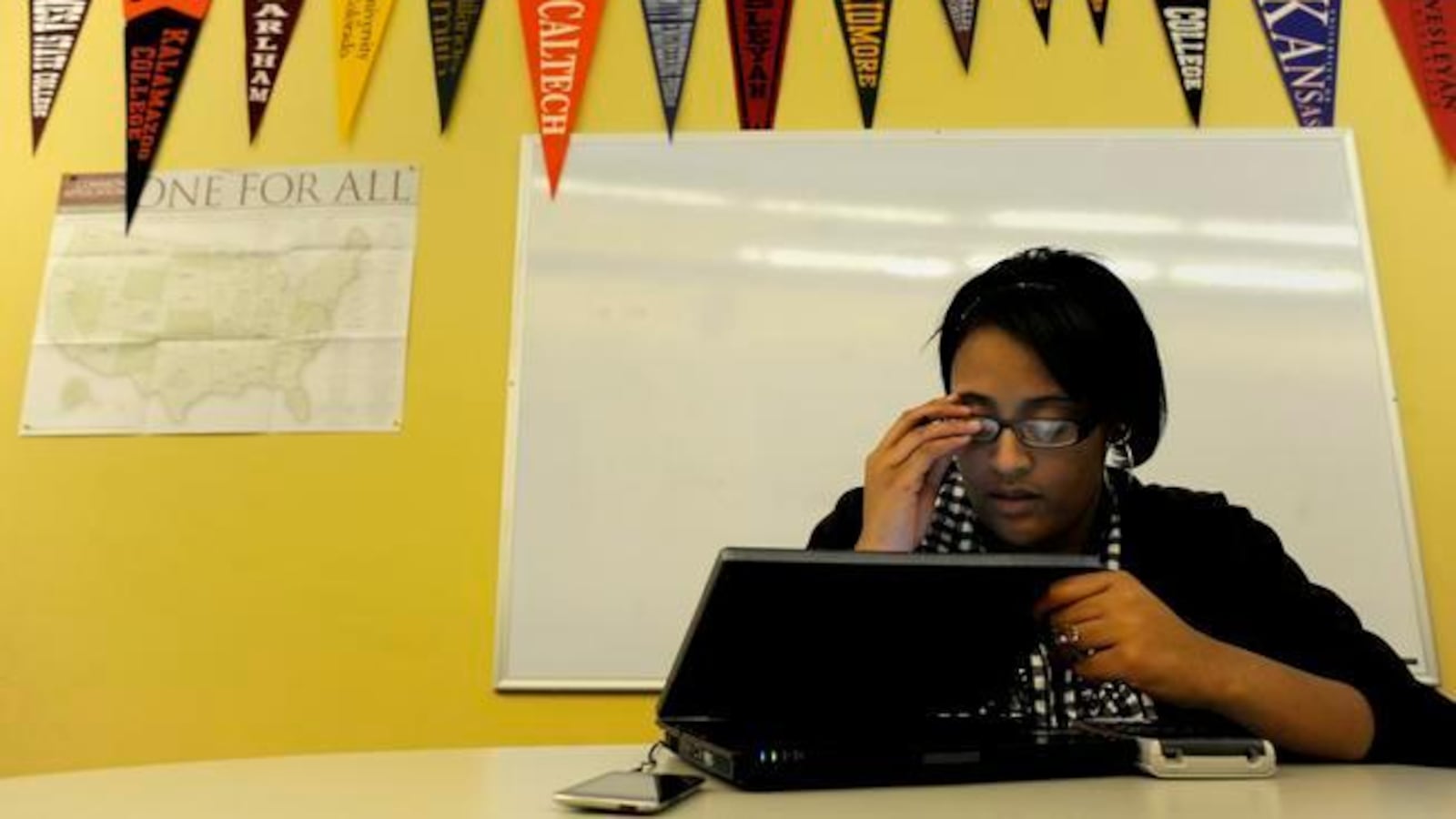In a sign that charter school growth in Denver could be slowing, the district’s largest network for the first time will not immediately open a high school to complement one of its middle schools.
Plateauing student enrollment, fewer empty buildings, and a growing hesitancy to replace struggling schools are changing the ecosystem for charters in Denver Public Schools, a district nationally known for collaborating with the independently run public schools.
Denver has incubated several high-performing homegrown charter networks, the largest of which is DSST. But DSST now faces a hiccup in its rapid growth. Despite intense lobbying from parents at DSST: Henry Middle School, the district did not make space available next school year for the network to open an accompanying high school, disrupting the network’s sixth-through-12th-grade model and leaving parents scrambling for other options.
“You are denying the southwest neighborhood a high-quality high school option, which will set kids back, I assure you,” parent Jovita Plowman told the school board earlier this year.
DSST: Henry Middle School opened in 2016 in a southwest Denver building that previously housed a struggling district-run middle school called Henry World School. District officials decided to phase out Henry World School and phase in two schools that would share the building: district-run Bear Valley International Middle School and DSST: Henry.
DSST: Henry was the seventh middle school DSST opened in Denver. The network has since opened an eighth middle school in far northeast Denver on the Noel campus. It also has six high schools — one for every middle school except Henry and Noel.
The district has approved DSST opening three more middle schools and five more high schools. Technically, DSST could do that anytime, as long as it finds a space. But school real estate in Denver is scarce and expensive, and the eager-to-improve school district has in the past been generous about sharing empty buildings with high-performing charter networks like DSST. For that reason, many Denver charters are housed in district buildings.
Both Denver Public Schools and DSST officials agree the district never promised the charter network in writing that it would provide space for a DSST: Henry high school. However, a 2013 school board resolution made it sound likely; it said “the district will collaborate with the school to secure a facility.”
“Many parents are feeling frustrated and upset, and know that it is in your power to find us a space that is available,” parent Nidia Ruiz told the school board earlier this school year. She said she didn’t understand why the district was denying DSST the opportunity to even apply for one.
The reason, said Jennifer Holladay, head of the district department that runs the process, is that the district doesn’t need another high school in southwest Denver.
According to a policy passed by the Denver school board in 2015, space in district-owned buildings is made available to new district-run or charter schools based on three factors: school quality, district needs, or enrollment demand.
But enrollment is declining in historically affordable southwest Denver as housing prices rise, pushing families out of the region. Demographers predict it will lose more than 2,000 students over the next five years, with the biggest declines at the elementary school level. Another new charter school planning to open in southwest Denver, the American Indian Academy of Denver, had to delay its opening until 2020 because it did not attract enough students.
What’s more, district officials are not looking to close or replace any low-performing schools in the region, as they did in 2016 with Henry World School. School closures have been a primary way district-owned buildings have become available in the past.
The high school closest to DSST: Henry, district-run John F. Kennedy High School, was actually flagged by the district this year for low student test scores. But after facing backlash for closing struggling schools, the school board decided to let Kennedy and other low-performing schools submit improvement plans instead.
DSST: Henry parents told the school board they didn’t want to send their children to struggling schools. They said they wanted what they signed up for: a sixth-through-12th-grade experience with a charter network known for getting 100 percent of its graduates into college.
“Do not discriminate against us,” parent Veronica Alvidrez said, “or force us to send our children to a low-performing school. Stop. Enough is enough.”
Although Henry eighth-graders were given priority for the lottery to get into two nearby DSST high schools, the network reports that 39 of them will go less than a mile away to Kennedy. The same number will go to DSST: College View High School, located three miles away. Eight students will go to DSST: Byers High School nine miles away.
“DSST was very hopeful that like in previous situations when there was a need for eighth-graders to move on to a DSST high school, we’d work with the district to find a space,” said Heather Lamm, DSST’s chief advocacy and communications officer.
The situation with Henry, she said, “was disappointing and frustrating.”
DSST will soon face the same situation with its newest middle school, on the Noel campus in far northeast Denver. It doesn’t have a high school location yet, either.

